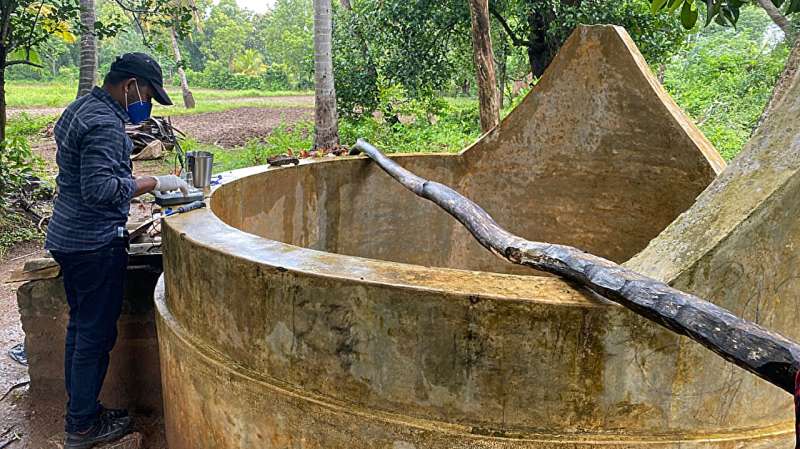
For the past couple of decades, tens of thousands of people living in rural Sri Lanka have been devastated by kidney failure due to unclear causes, also known as CKDu. Similar incidences of mysterious kidney diseases have emerged in tropical farming communities around the world.
A massive field study of the wells supplying drinking water to the Sri Lankan communities, conducted by researchers at Duke University, has identified a possible culprit—glyphosate, the active compound in Roundup, the most widely used herbicide in the world.
Roundup is a glyphosate-based herbicide used to control weeds and other pests. Because it is supposed to break down in the environment within a few days to weeks, its use is relatively under-regulated by most public health agencies. But when glyphosate encounters certain trace metal ions that make water hard—like magnesium and calcium—glyphosate-metal ion complexes can form. Those complexes can persist up to seven years in water and 22 years in soil.
In certain agricultural areas of Sri Lanka, the high, dry climate combined with its geological formations creates the perfect conditions for hard water. It is also in these regions that CKDu has reached epidemic levels, with as many as 10% of children aged 5–11 years exhibiting signs of early onset kidney damage.
Through this technique, the researchers found significantly higher levels of the herbicide in 44% of wells within the affected areas versus just 8% of those outside it.
“We really focused on drinking water here, but it’s possible there are other important routes of exposure—direct contact from agricultural workers spraying the pesticide, or perhaps food or dust,” said Ferguson. “I’d like to see increased study with more emphasis looking at the links among these exposure routes. It still seems like there might be things we’re missing.”
Part of Ferguson’s concern, he said, is that glyphosate’s fate profile resembles a contaminant that he’s studied closer to home—per- and polyfluoroalkyl substances, or PFAS, which are also called “forever chemicals” because of their persistence in the environment.
“We think of PFAS as being a drinking water contaminant because it’s mobile and persistent. Now we’re realizing that glyphosate may also be quite persistent in hard water areas,” said Ferguson. “This gives me concerns about exposures here in the United States.”